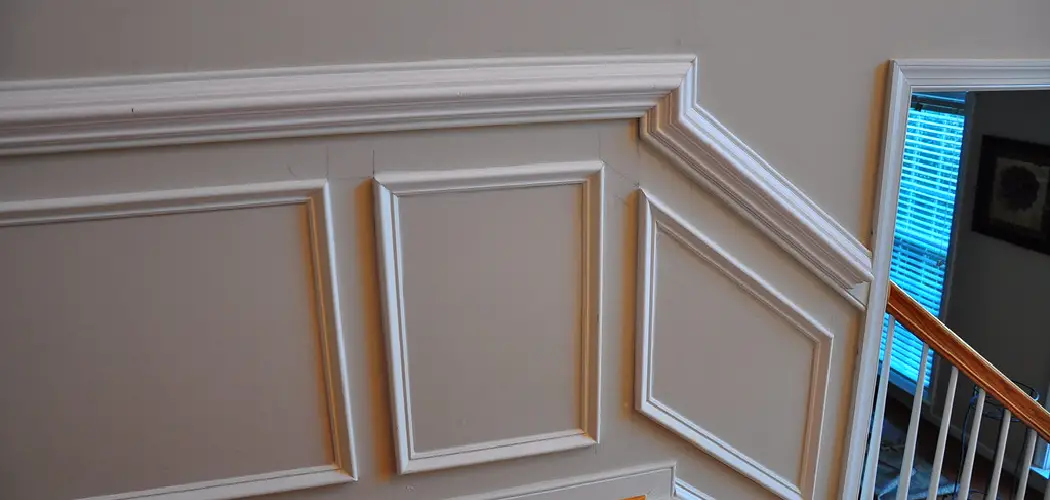Do you have chair rail that you’d like to remove, but feel overwhelmed by the task? We know exactly how you feel! Removing chair rail from a wall can be intimidating and seemingly complicated for those unfamiliar. But don’t worry – we’re here to help make it easy with our step-by-step guide on how to remove chair rail from wall.
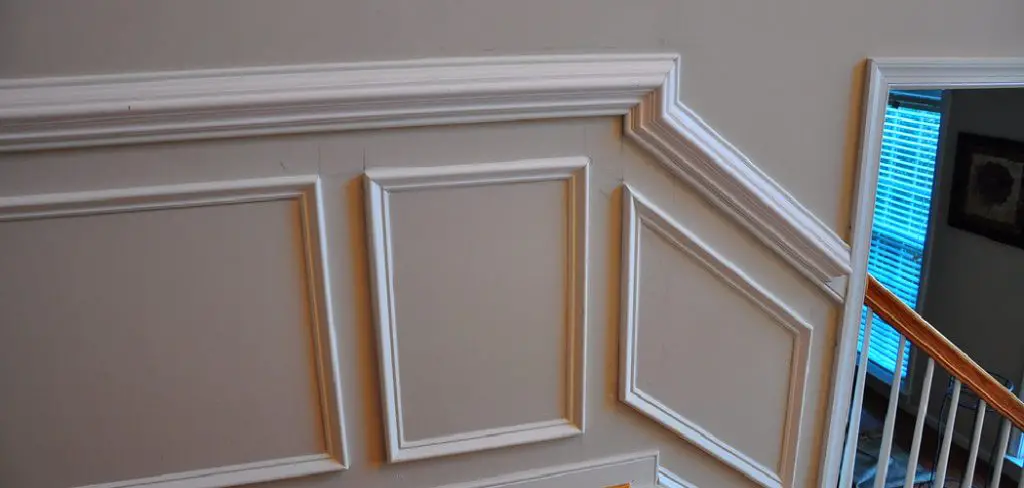
From understanding what tools are needed and how they should be used, all the way through clean up afterwards, this blog post will cover everything necessary for removing your chair rail quickly and safely.
Removing chair rail from your walls can be a tricky task if you don’t have the right tools or know-how. It may seem like an intimidating undertaking, but with the proper planning and preparation, it doesn’t need to be.
In this guide, we’ll cover some of the steps you’ll need to take in order to complete this project safely and correctly so that you can enjoy stylish wall treatments without worrying about damaging your home’s surface.
Why is It Important to Remove Chair Rail From Wall?
1 . To Update Your Home’s Aesthetic
Chair rail is a decorative trim that has been used for centuries to protect walls from furniture damage. However, trends change and many homeowners are now opting for a more streamlined look in their home decor. Removing the chair rail can instantly give your room a modern, updated feel.
2 . To Create More Space
In smaller rooms, the presence of a chair rail can make the space feel more segmented and cramped. By removing it, you can create a sense of flow and openness in the room, making it appear larger.
3 . To Prepare for Painting or Wallpapering
If you’re looking to change up your walls with a fresh coat of paint or some new wallpaper, removing the chair rail is essential. Not only do you avoid having to cut around it, but removing the chair rail also allows for a more seamless and professional finish.
4 . To Fix Damaged Walls
Over time, chair rails can become damaged from wear and tear or accidental bumps. Removing them gives you the opportunity to repair any damage underneath before applying a new coat of paint or wallpaper.
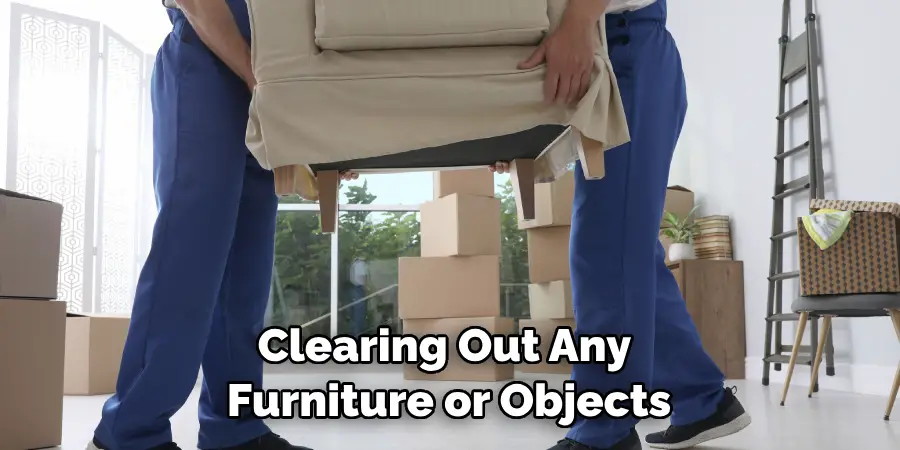
How to Remove Chair Rail From Wall in 5 Easy Steps
Step 1: Gather All The Tools
The very first step is to gather all the required tools that you will need to remove the chair rail from your wall. These include a hammer, a pry bar or a crowbar, gloves, safety glasses, and possibly a utility knife.
Step 2: Prepare The Area
Before you actually start removing the chair rail, it is important to prepare the area properly. This includes clearing out any furniture or objects from the surrounding area to avoid any damage. Additionally, it is recommended to cover the floor with a drop cloth or newspaper to catch any falling debris.
Step 3: Loosen The Chair Rail
Using a hammer and pry bar or crowbar, gently tap the end of the pry bar under one end of the chair rail. Slowly work your way along the length of the rail, prying it away from the wall. Be careful not to use too much force as this can damage the wall.
Step 4: Remove Nails or Screws
Once you have successfully loosened the chair rail, carefully remove any nails or screws that were holding it in place. Use pliers or a hammer if necessary to fully remove them from the wall.
Step 5: Clean Up
After the chair rail has been removed and all nails or screws have been taken out, it is important to clean up any leftover debris. Use a putty knife or sandpaper to smooth out any rough spots on the wall where the chair rail was attached. You can also fill in any holes left behind with putty or spackling paste.
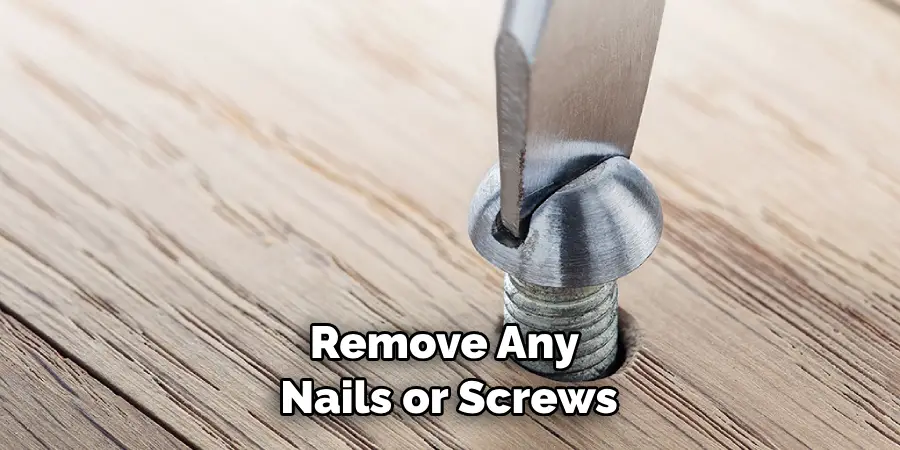
Some Extra Tips to Remove Chair Rail From Wall
1 . Do Not Rush
When you start removing the chair rail from wall, do not be in a hurry. It is important to take your time and work cautiously. This process takes some effort and it can be very frustrating if you rush through it.
2 . Preparation is Key
Before starting the removal process, make sure to prepare everything that you will need. Gather all the necessary tools, such as a hammer, pry bar, putty knife, and safety glasses. Also, cover the floor with a drop cloth to protect it from any damage.
3 . Use Protective Gear
Always wear protective gear when removing the chair rail from the wall. This includes safety glasses and gloves to protect your hands and eyes from flying debris or sharp edges. Also, make sure to wear a dust mask if you have allergies or are sensitive to dust.
4 . Start from the Middle
Start removing the chair rail from the middle of the wall instead of one end. This will make it easier to remove and prevent damage to the drywall. Use a hammer and pry bar to gently loosen the nails along the middle section, then work your way outwards towards the ends.

5 . Pry Gently
When using a pry bar, be sure to pry gently. Applying too much pressure can cause damage to the wall or the chair rail itself. Use a putty knife or small flathead screwdriver to help loosen any stubborn nails and avoid putting too much strain on the pry bar.
6 . Remove Nails
After the chair rail is removed, there may still be nails or staples left in the wall. Use pliers or a claw hammer to remove these carefully. Be sure to wear gloves and watch out for any sharp edges.
7 . Sand and Patch
Once the chair rail and any remaining hardware is removed, sand down any rough spots on the wall where the chair rail was attached. Then, use spackling or joint compound to fill in any nail holes or cracks. Sand the patched areas smooth and wipe away any excess dust before painting.
8 . Be Patient
Removing a chair rail from a wall can be a time-consuming process, especially if it is an older house with multiple layers of paint and many stubborn nails. Remember to be patient and take breaks if needed. It may also be helpful to have a friend or family member assist you with the process, as some chair rails can be long and difficult to handle alone.
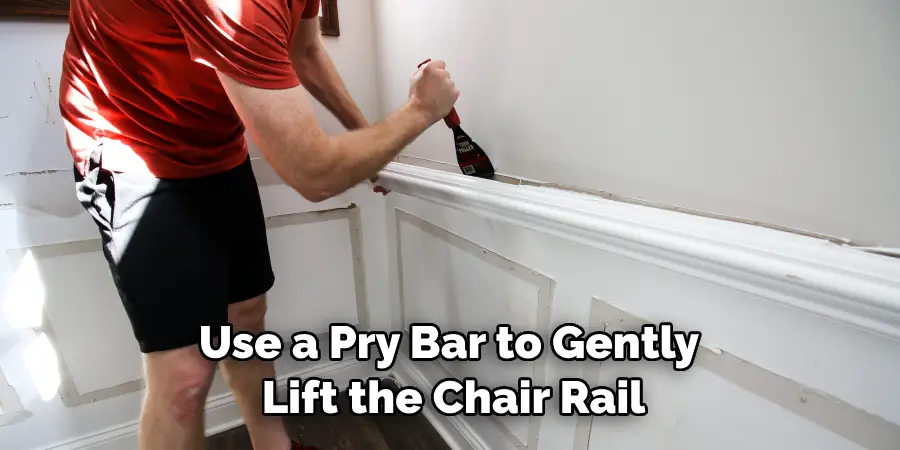
Frequently Asked Questions
What Precautions Should I Take Before Removing Chair Rail From Walls?
Before you start to remove the chair rail from your walls, there are a few precautions you should take. First, make sure you wear protective gear such as gloves and safety glasses to avoid any injuries.
Additionally, it is important to turn off any electricity in the area and cover nearby furniture or flooring with drop cloths to prevent damage. Finally, it is recommended to test a small area of the wall first to ensure you are able to remove the chair rail without causing significant damage.
What Tools Do I Need for Removing Chair Rail From Walls?
The tools needed for removing chair rail from walls may vary depending on the type of chair rail and how it was installed. However, some commonly used tools include a hammer, pry bar, putty knife, and screwdriver. It may also be helpful to have a utility knife and a small handsaw on hand.
How Do I Remove Chair Rail From Walls Without Damaging Them?
To remove chair rail from walls without causing damage, it is important to use the right tools and techniques. First, start by carefully inserting a putty knife or a screwdriver between the chair rail and the wall to loosen any adhesive or caulk.
Then, use a pry bar to gently lift the chair rail away from the wall. If there are any nails holding the chair rail in place, carefully remove them using pliers or a hammer. If necessary, use a utility knife or handsaw to cut through any stubborn adhesive. It is important to work slowly and carefully to avoid damaging the walls.
Are There Any Tips for Making the Chair Rail Removal Process Easier?
Yes, there are a few tips that can make the chair rail removal process easier. One tip is to use a heat gun or blow dryer to soften any adhesive before attempting to remove the chair rail. This will make it easier to loosen the chair rail from the wall.
Another tip is to work in small sections and to avoid pulling too hard on the chair rail, as this can cause damage to both the chair rail and the wall. Finally, it may be helpful to have a friend or family member assist you with holding the chair rail while you remove any nails or adhesive.
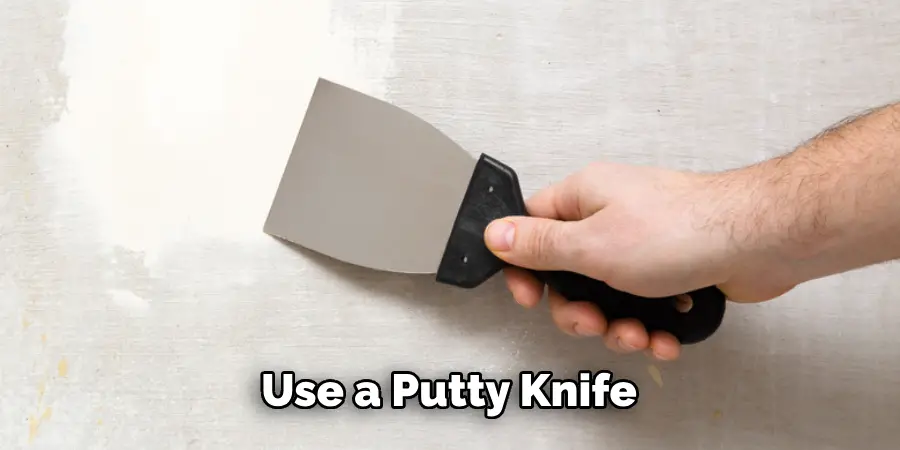
What Should I Do After Removing the Chair Rail From Walls?
After successfully removing the chair rail from your walls, there are a few steps you can take to ensure a smooth finish. First, use a putty knife or sandpaper to remove any remaining adhesive or caulk from the wall.
Then, fill in any holes left by nails with spackling compound and sand them down once dry. Finally, you can repaint the wall to cover up any damage or discoloration caused by the chair rail removal process. Following these steps will help restore your walls to their original condition and prepare them for any future updates or renovations.
Conclusion
Removing chair rail from a wall can be a daunting task. However, with the right tools and a bit of patience, it can certainly be done. Whether you’re tackling this project on your own or with the help of an experienced professional, let this article serve as your starting point in how to remove chair rail from a wall.
Now you know how to remove chair rail from wall! Just remember to take all necessary safety measures as you go along – wearing gloves and goggles are always recommended! On top of that, measure twice and cut once so you don’t make unnecessary mistakes! With a little elbow grease and guidance, you’ll be able to achieve the result you want in no time at all!

